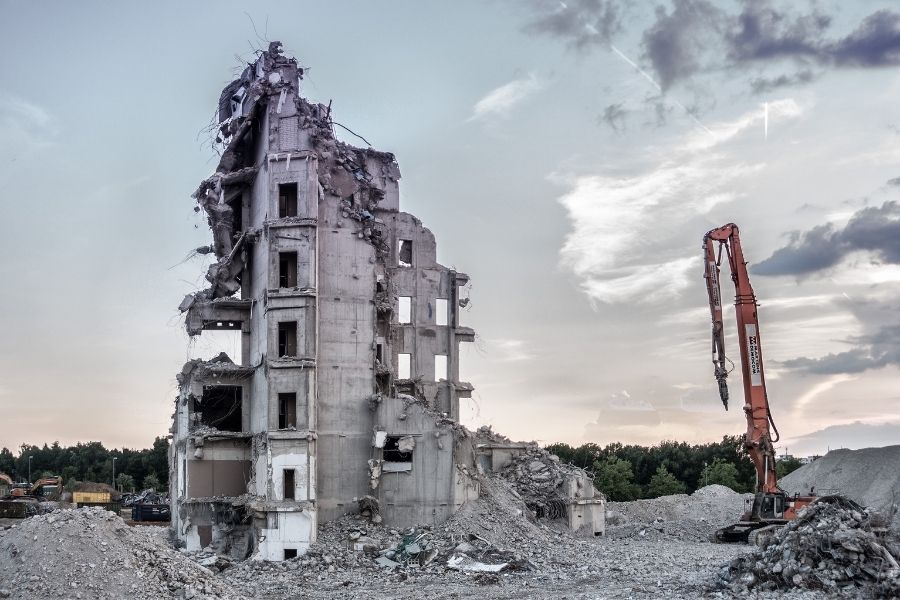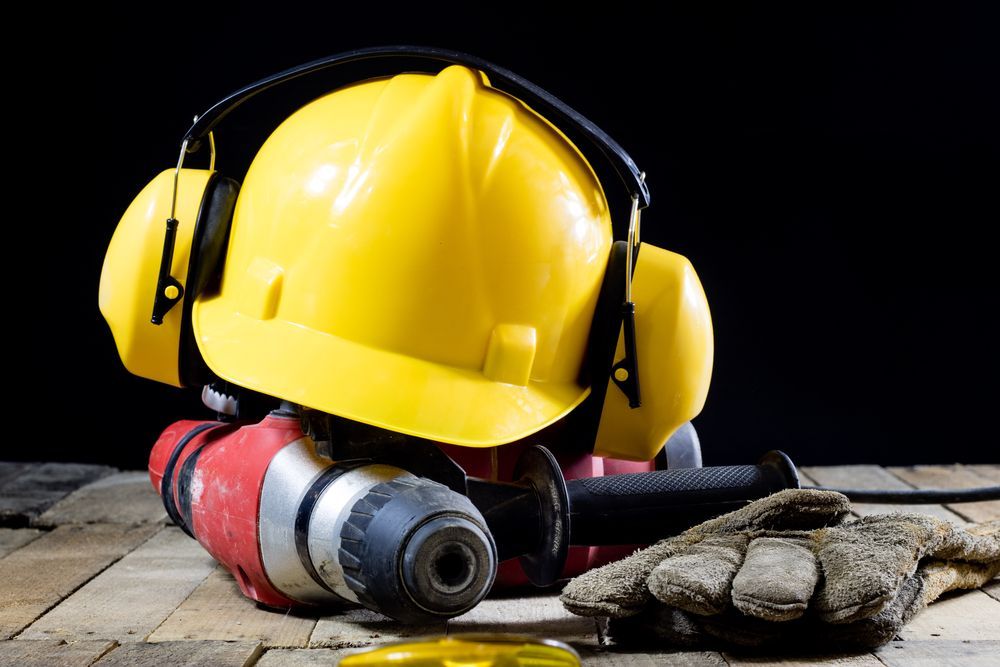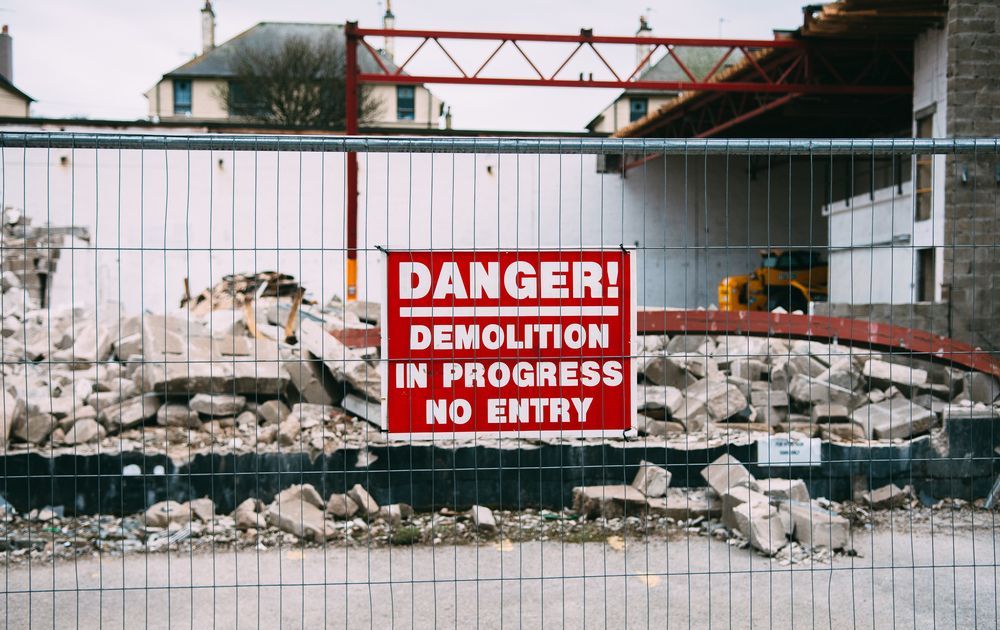Manual vs Mechanical Demolition: Which is Right for Your Next Job?
Share this article:

When most people think of demolition, they envision a building coming down and turning into rubble. But the act of razing a building is complicated and requires trained professionals to safely and successfully execute the practice. Two of the most common types of demolition are
manual demolition and mechanical demolition. In this post, we’ll detail the basics of each practice, discuss the benefits of each, and let you decide for yourself whether manual or mechanical would be the best fit for your next project. Here’s a look at everything you need to know when it comes to manual vs mechanical demolition.
Manual vs. Mechanical Demolition: The Basics
Let’s begin by first discussing what manual and mechanical demolition are. Think of manual demolition as reverse engineering construction. In other words, manual demolition consists of systematically dismantling a building piece by piece, bit by bit. It’s commonly done with hand tools, including jackhammers, sledgehammers, picks, and more.
Mechanical demolition, conversely, utilizes heavy-duty machinery such as cranes,
excavators, wrecking balls, and bulldozers to take down a building. Compared to manual demolition, it’s a much faster process. However, it also comes with a greater risk of injury due to the equipment being used and the speed of the process.
In the following sections, we’ll get into some of the key benefits of both manual and mechanical demolition.
Benefits of Manual Demolition
As we said earlier, manual demolition is essentially reverse construction or deconstruction, which involves using a variety of handheld tools to take a building apart, piece by piece. Noting this, it shouldn’t surprise you to learn that it’s a more tedious method of demolition that can take several weeks, months, and perhaps even years. However, there are some key benefits associated with manual demolition. For instance, it’s a great process if you’re serious about recycling building materials that otherwise may have been destined for the scrap heap. When you take apart a building, you’re better able to sort through what’s salvageable and what’s not. Salvageable items can be reused and upcycled.
Aside from better being able to sort through building materials, there are a few other notable benefits associated with manual demolition:
- It’s safer: It tends to be a safer method of demolition, as there’s less heavy equipment used to take apart the structure. However, a proper assessment and Safe Work Method Statement should still be developed to outline hazards and institute proper measures.
- It’s ideal in areas with surrounding buildings and structures: If you’re taking down a building that’s located in close proximity to other structures that are being preserved, manual demolition can help ensure that they don’t receive any damage. Taking down a building with heavy equipment requires a fair amount of precision and skill. It can be difficult to bring this equipment into a crowded city block. Doing so also risks damage to surrounding buildings and structures.
- It’s ideal for selective demolition: Only looking to demolish part of a structure? Manual demolition can help ensure that the part of the building that’s to be left standing stays in good condition.
- Abatement and mitigation: Older buildings often contain lead and asbestos-containing materials. Manual demolition can ensure that proper mitigation and abatement practices are carried out.
Benefits of Mechanical Demolition
Since mechanical demolition uses heavy-duty
equipment, you’re probably not surprised to learn that the biggest benefit associated with this practice is speed. The most common type of demolition method for large projects, buildings can be taken down with heavy equipment quickly and efficiently so that the site can be prepared for a new development faster. There are other notable benefits of mechanical demolition. These include:
- Fewer workers: Mechanical demolition is a far less labor-intensive practice than manual demolition. With mechanical demolition, it’s the equipment – and not so much the workforce – that’s doing the work. As a result, fewer workers are needed on site.
- It’s efficient: Mechanical demolition is the most efficient type of demolition. It’s faster and more efficient than manual demolition and it’s also more efficient than using explosives to implode a building when you factor in the tedious prep work that goes into planning where to place explosives. Furthermore, implosions are expensive and typically regulated by various ordinances depending on the municipality.
- It’s cost-effective: Because there are fewer workers required on-site, mechanical demolition tends to be a more cost-effective solution. The main expense is renting the equipment to demolish the building and clean up the debris.
How to Choose the Right Type for Your Project
So what type of demolition is best for your project – manual or mechanical? It really boils down to weighing a few important considerations:
- Speed: How fast do you need a building to come down? Property owners tend to want buildings demolished as fast as possible so that they can begin working on the new development or new plans for the site sooner. If there’s a need for speed, mechanical demolition is more efficient than manual demolition.
- Cost: Mechanical demolition isn’t just faster than manual demolition, but it’s cheaper as well. Time tends to equal money, and when you also factor in the fewer workers that are necessary on-site when performing mechanical demolition, the cost savings can be significant. Owners tend to want the project done as quickly and as affordably as possible, two factors that favor mechanical demolition.
Mechanical demolition tends to make sense for the majority of projects, but as we noted earlier, there are a few instances where manual demolition may make more sense. For example, if material recycling is important, manual demolition is a better practice. Additionally, manual demolition may also be the better option if the project is in a confined space and there’s concern about damage to nearby buildings.
Contact Us Today
For more information on the key differences between manual and mechanical demolition,
contact us today.



